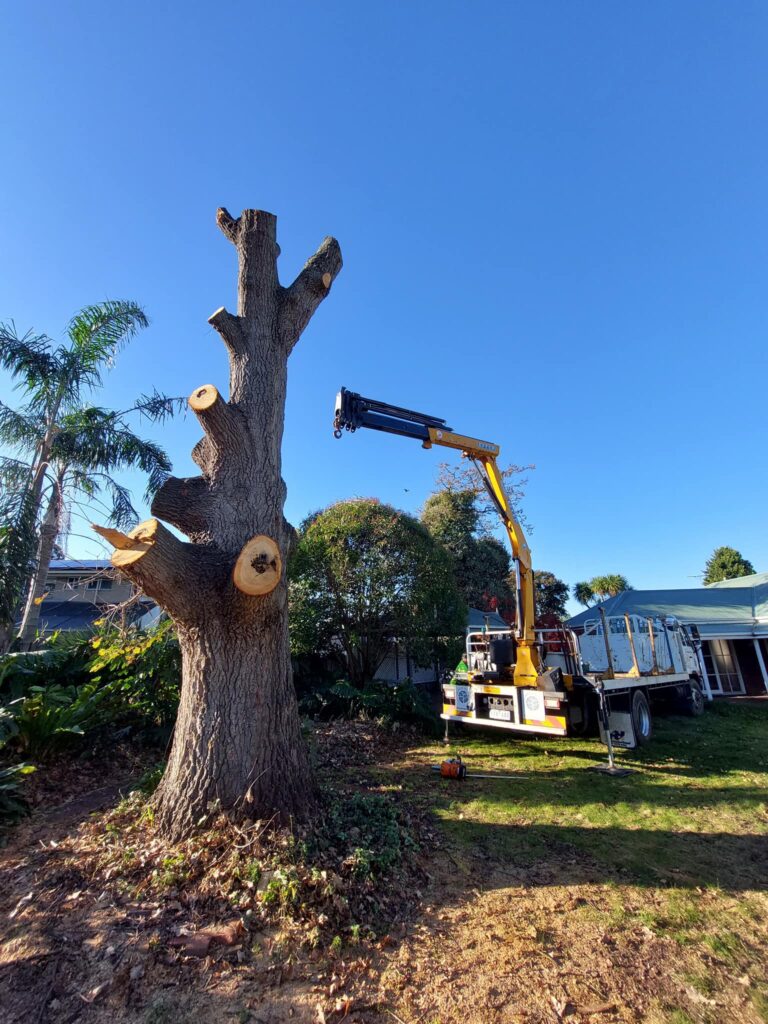The Ultimate Homeowner’s Guide to Safe and Efficient Tree Removal Near Power Lines

The importance of safe and efficient tree removal near power lines
As a homeowner, it’s crucial to understand the risks associated with tree removal near power lines. Trees growing in close proximity to power lines pose a significant threat to both property and personal safety. Falling branches or trees can cause power outages, property damage, and even injuries or fatalities. Therefore, it is essential to prioritize safe and efficient tree removal to mitigate these risks.
Understanding the risks of tree removal near power lines
Removing trees near power lines is a hazardous task that should only be carried out by professionals. The risks involved include the potential for electrocution, falling branches or trees, and damage to the power lines themselves. Without the proper knowledge and equipment, attempting to remove a tree near power lines can result in severe consequences.
Hiring a professional arborist for tree removal near power lines
When it comes to tree removal near power lines, hiring a professional arborist is non-negotiable. These skilled experts have the necessary training and experience to handle such delicate and risky tasks. They understand the importance of safety protocols and have the specialized equipment required to ensure a safe and efficient removal process.
Tips for obtaining a tree removal permit
Before proceeding with tree removal near power lines, it is crucial to obtain the necessary permits from your local authorities. These permits ensure that the removal process adheres to local regulations and safety standards. Here are some tips to help you navigate the process of obtaining a tree removal permit:
- Research local regulations: Familiarize yourself with the specific requirements and regulations in your area regarding tree removal near power lines.
- Contact the local authority: Reach out to your local municipality or utility company to inquire about the permit application process.
- Submit a detailed plan: When applying for a tree removal permit, it is crucial to provide a detailed plan outlining the scope of the project.
- Engage with professionals: It may be beneficial to involve the services of a professional arborist during the permit application process. Their expertise and knowledge can help ensure that your application meets all the necessary requirements, increasing the chances of approval.
By following these tips, you can navigate the permit application process smoothly and ensure that your tree removal project near power lines is conducted legally and safely.
Stump removal after tree removal near power lines
After a tree has been successfully removed near power lines, it is essential to address the remaining stump. Stump removal serves both aesthetic and practical purposes, preventing potential issues down the line. Here are some options for stump removal:
Stump grinding
Stump grinding is a common method used to remove tree stumps. This process involves using a specialized machine to grind the stump into small wood chips. The remaining wood chips can be used as mulch or easily removed from the site.
Chemical stump removal
Chemical stump removal is an alternative method that involves applying a stump removal chemical to accelerate the decomposition process. This method is typically slower than stump grinding but requires less physical effort.
Manual removal
For smaller stumps, manual removal may be an option. This process involves digging around the stump, cutting the roots, and leveraging the stump out of the ground using tools such as a shovel, axe, or pry bar.
Prioritize Safety: Consult Your Tree Removal Needs with Arborist Experts
Remember, tree removal near power lines is not a task to be taken lightly. Always prioritize safety and consult with professionals who have the knowledge, skills, and equipment to handle these delicate situations. By following the guidelines outlined in this homeowner’s guide, you can make informed decisions and contribute to a safer and more efficient tree removal process near power lines.